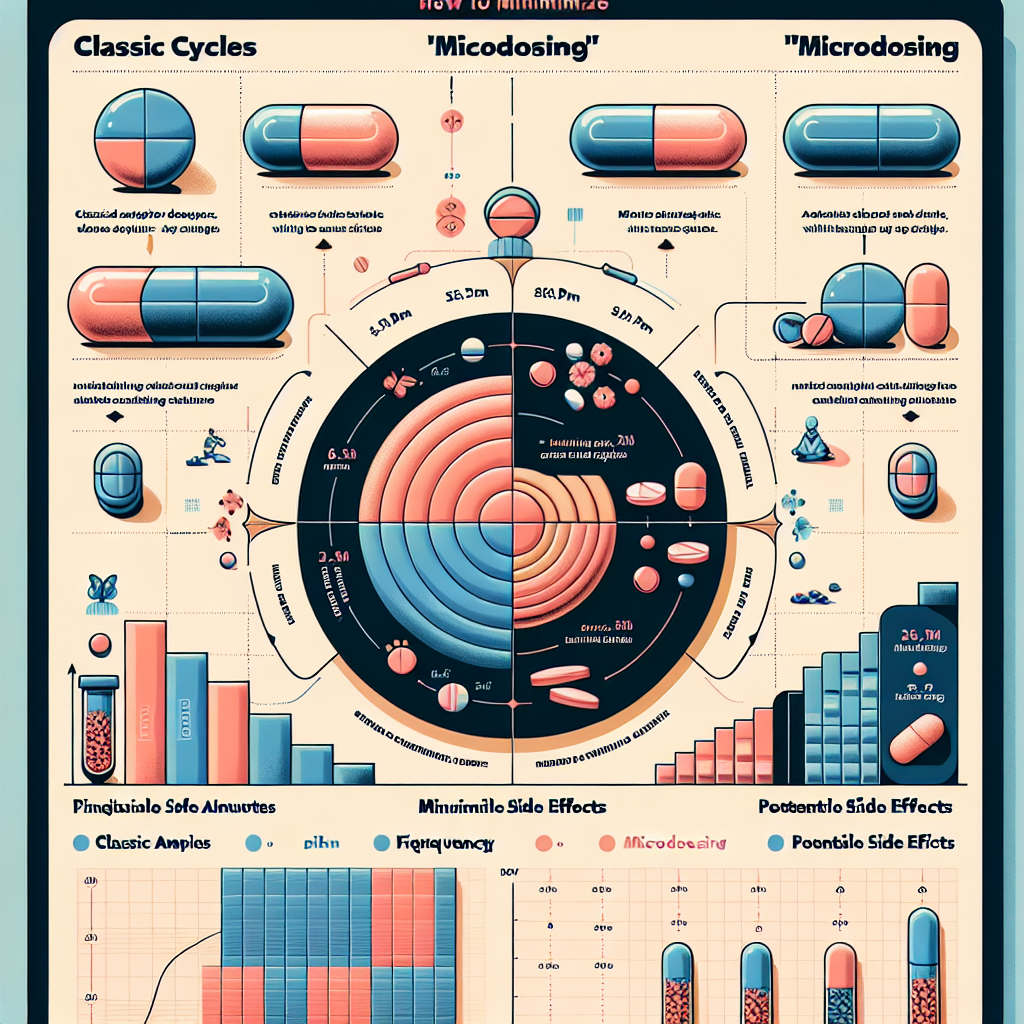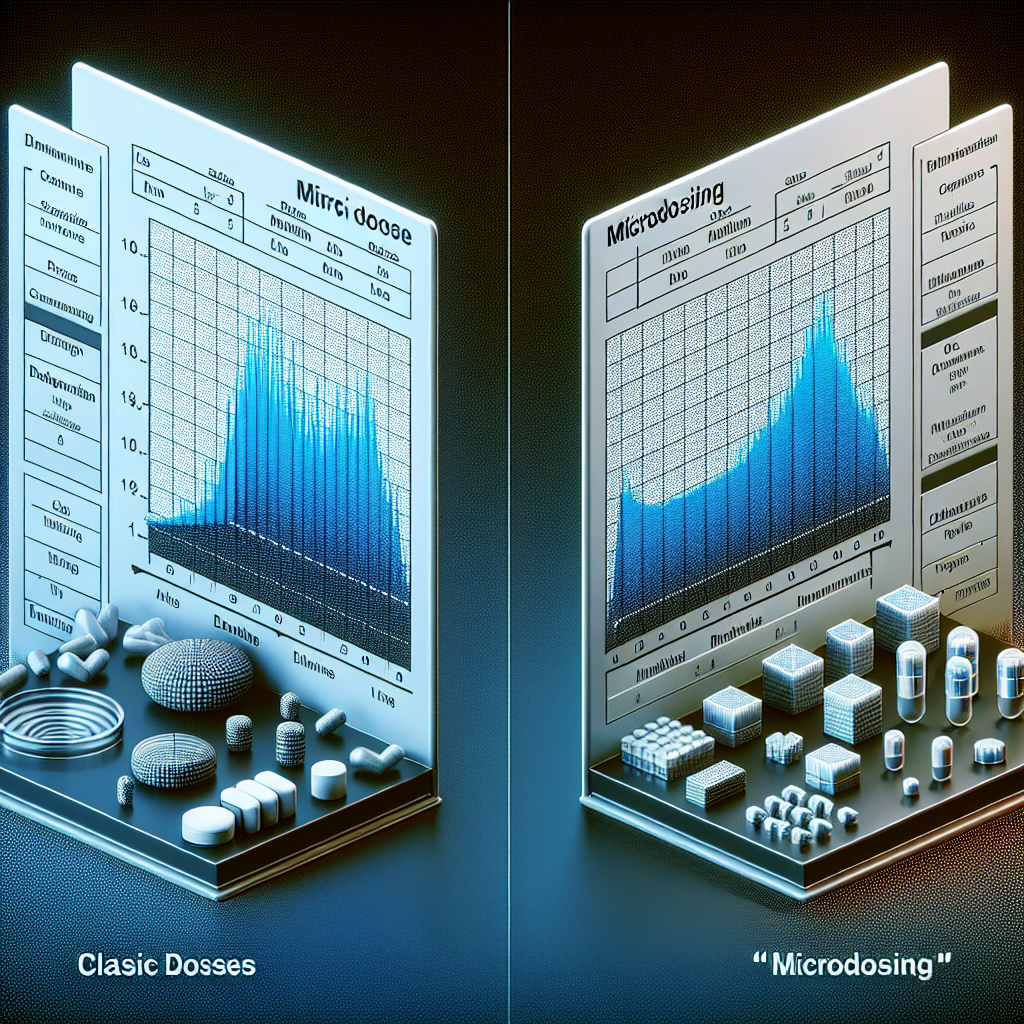Optimal Dosages and Intake Schedules: Comparison of Classic Cycles and “Microdosing” to Minimize Side Effects

When it comes to taking medication, finding the right dosage and intake schedule is crucial for achieving the desired results while minimizing potential side effects. This is especially true for medications that are taken on a regular basis, such as birth control pills, antidepressants, and blood pressure medications. In recent years, there has been a growing trend towards “microdosing,” which involves taking smaller doses of medication more frequently. In this article, we will explore the differences between classic cycles and microdosing and how they can impact the effectiveness and side effects of medication.
The Classic Cycle Approach
The classic cycle approach involves taking a medication at a specific dosage for a set period of time, followed by a break or “off” period. This is commonly seen with birth control pills, where a woman takes the pill for 21 days and then has a 7-day break before starting a new pack. This approach is also used for medications such as antibiotics, where a patient takes the medication for a specific number of days and then stops.
One of the main advantages of the classic cycle approach is that it allows the body to have a break from the medication, which can help reduce the risk of side effects. For example, birth control pills can cause side effects such as nausea, headaches, and mood changes. By having a break every month, the body has a chance to recover and potentially reduce these side effects.
However, the classic cycle approach also has its drawbacks. For some medications, such as antidepressants, it can take several weeks for the medication to reach its full effectiveness. This means that during the “off” period, the patient may experience a return of their symptoms. Additionally, some medications may have a “build-up” effect, where the full benefits are not seen until the medication has been taken for a certain amount of time. This can be disrupted by the breaks in the classic cycle approach.
The Rise of Microdosing
Microdosing involves taking smaller doses of medication more frequently, rather than taking a larger dose all at once. This approach has gained popularity in recent years, particularly with medications such as antidepressants and ADHD medications. For example, instead of taking a 20mg dose of an antidepressant once a day, a patient may take a 5mg dose four times a day.
One of the main advantages of microdosing is that it can help reduce side effects. By taking smaller doses, the body may be able to better tolerate the medication, resulting in fewer side effects. Additionally, for medications that have a “build-up” effect, microdosing can help maintain a consistent level of the medication in the body, potentially leading to better results.
However, microdosing also has its drawbacks. It can be more difficult to remember to take multiple doses throughout the day, and it may not be feasible for some people’s schedules. Additionally, some medications may not be available in smaller doses, making microdosing impossible.
Which Approach is Right for You?
When it comes to choosing between classic cycles and microdosing, there is no one-size-fits-all answer. It ultimately depends on the individual and the medication being taken. Some people may find that the classic cycle approach works best for them, while others may prefer microdosing.
It is important to consult with a healthcare professional before making any changes to your medication regimen. They can provide guidance on the best approach for your specific needs and monitor for any potential side effects or interactions.
Real-Life Examples
To better understand the differences between classic cycles and microdosing, let’s look at two real-life examples:
- Birth Control Pills: As mentioned earlier, birth control pills are commonly taken in a classic cycle approach, with a 21-day active pill period followed by a 7-day break. However, some women may choose to take their pills continuously without a break, known as “extended cycling.” This can help reduce the frequency of side effects such as headaches and mood changes.
- Antidepressants: Antidepressants are often taken in a classic cycle approach, with a daily dose taken at the same time each day. However, some people may find that they experience side effects such as nausea or drowsiness. In these cases, a healthcare professional may recommend microdosing, where the daily dose is split into smaller doses taken throughout the day.
Conclusion
Finding the optimal dosage and intake schedule for medication is crucial for achieving the desired results while minimizing side effects. The classic cycle approach and microdosing are two different approaches that can be used, each with their own advantages and drawbacks. It is important to work with a healthcare professional to determine the best approach for your specific needs and to monitor for any potential side effects or interactions. Remember, what works for one person may not work for another, so it is important to find the approach that works best for you.

